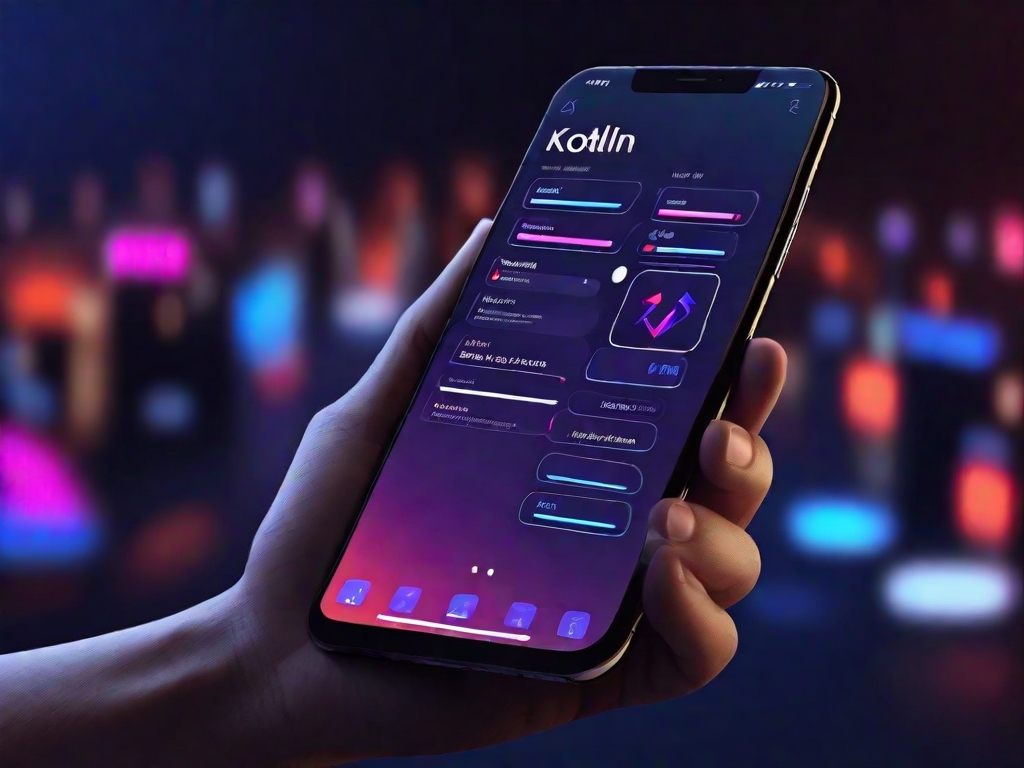Introduction
Kotlin is a popular programming language for developing cross-platform mobile applications. It allows developers to write code once and deploy it on multiple platforms, such as Android and iOS. Here are some of the benefits of using Kotlin for cross-platform mobile app development:
Code sharing: Kotlin allows developers to share code between different platforms, which reduces development time and costs.
Ease of use: Kotlin is easy to learn and use, especially for developers who are already familiar with Java.
Interoperability: Kotlin is fully interoperable with Java, which means that developers can use existing Java libraries and frameworks in their Kotlin projects.
Performance: Kotlin is a high-performance language that compiles to native code, which results in faster app performance.
Best practices
When it comes to cross-platform mobile app development using Kotlin, there are several best practices that developers should follow:
Design for multiple platforms: Developers should design their apps with multiple platforms in mind to ensure that they look and function well on all devices.
Use platform-specific features: While cross-platform development is all about code sharing, it’s important to use platform-specific features when necessary to provide the best user experience.
Test thoroughly: Developers should test their apps thoroughly on all platforms to ensure that they work as expected.
Optimize performance: Developers should optimize their apps for performance by minimizing resource usage and reducing load times.
Server-side frameworks for Kotlin
Kotlin is a great fit for developing server-side applications. It allows you to write concise and expressive code while maintaining full compatibility with existing Java-based technology stacks, all with a smooth learning curve.
Here are some examples of server-side frameworks for Kotlin:
Spring: Spring makes use of Kotlin’s language features to offer more concise APIs, starting with version 5.0. The online project generator allows you to quickly generate a new project in Kotlin.
Ktor: Ktor is a framework built by JetBrains for creating Web applications in Kotlin, making use of coroutines for high scalability and offering an easy-to-use and idiomatic API.
Quarkus: Quarkus provides first-class support for using Kotlin. The framework is open source and maintained by Red Hat. Quarkus was built from the ground up for Kubernetes and provides a cohesive full-stack framework by leveraging a growing list of hundreds of best-of-breed libraries.
Best practices (backend)
When it comes to backend development using Kotlin, there are several best practices that developers should follow:
Design for multiple platforms: Developers should design their apps with multiple platforms in mind to ensure that they look and function well on all devices.
Use platform-specific features: While cross-platform development is all about code sharing, it’s important to use platform-specific features when necessary to provide the best user experience.
Test thoroughly: Developers should test their apps thoroughly on all platforms to ensure that they work as expected.
Optimize performance: Developers should optimize their apps for performance by minimizing resource usage and reducing load times.
Cross-platform frameworks that use Kotlin
When it comes to cross-platform mobile app development, there are several frameworks available that use Kotlin, Flutter, and React Native. Here’s a comparison of these frameworks based on various grounds:
| Framework | UI | Business Logic | Layered Architecture | Interoperability | Easy to go Native | Integration with existing Projects |
| Kotlin Multiplatform Mobile (KMM) | In KMM, we have to write native UI code separately for Android and iOS. | Business logic is common but written in different languages: Kotlin for Android and Swift for iOS. | KMM has the architecture that separates the UI and business logic by default. | Kotlin can interop with Java and other languages. | It is very easy to write native code at any level of coding and at any layer of the architecture. | KMM has the power to get integrated with any existing project. |
| Flutter | Flutter uses canvas from native SDK of different platforms and draws its own UI component on that canvas using Material design specifications. | Business logic is written in Dart. | Flutter has a layered architecture that separates the UI, business logic, and platform-specific code. | Flutter can interop with Java and other languages. | It is very easy to write native code at any level of coding and at any layer of the architecture. | Flutter has the power to get integrated with any existing project. |
| React Native | React Native uses native components mapped to JS code. | Business logic is written in JS. | React Native has a layered architecture that separates the UI, business logic, and platform-specific code. | React Native can interop with Java and other languages. | It is very easy to write native code at any level of coding and at any layer of the architecture. | React Native has the power to get integrated with any existing project. |
Native developers will move toward KMM as from Android’s perspective it is Kotlin, the same language they are using in the development of their Native apps. If KMM is used by an Android developer then the iOS developer has to do a very little task, creating only the UI of the App rest he will get from the shared code of KMM. From the user’s perspective, they will get separate native apps.
Conclusion
Cross-platform mobile app development using Kotlin is an excellent choice for reaching a wider audience and minimizing development costs. However, it comes with its own set of challenges. At Mobiwolf, we recommend carefully considering the pros and cons to decide if Kotlin is the right choice for your project. With proper planning, adherence to best practices, and a skilled development team, you can create a successful cross-platform app that caters to both Android and iOS users, all while reaping the benefits of code reusability and cost-efficiency.
If you’re looking for expert guidance and assistance with cross-platform mobile app development using Kotlin, don’t hesitate to get in touch with Mobiwolf. We’re here to turn your app idea into a reality, and Kotlin is just one of the tools we use to make that happen. Contact us today to discuss your project and how we can help you achieve your app development goals!









